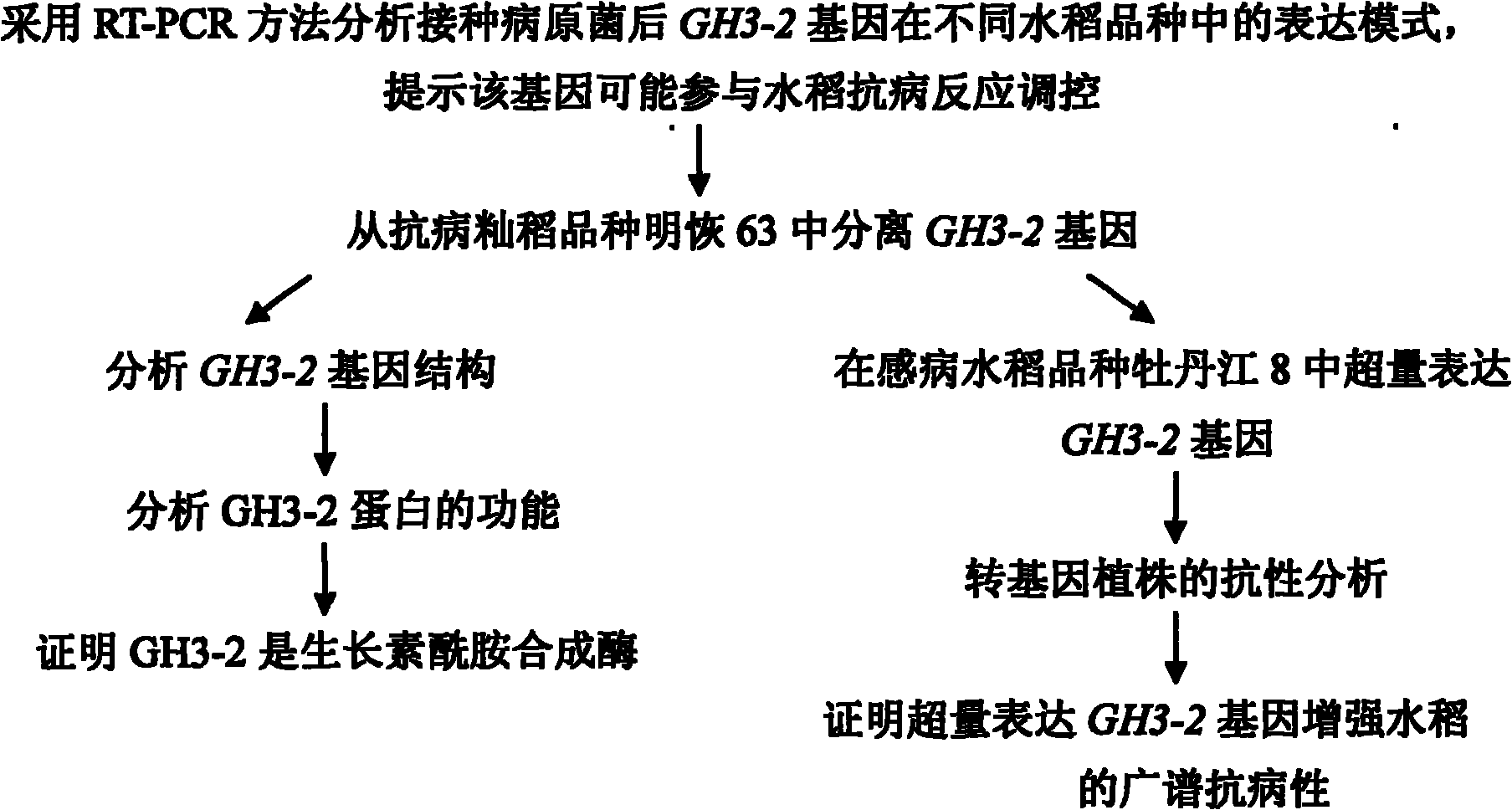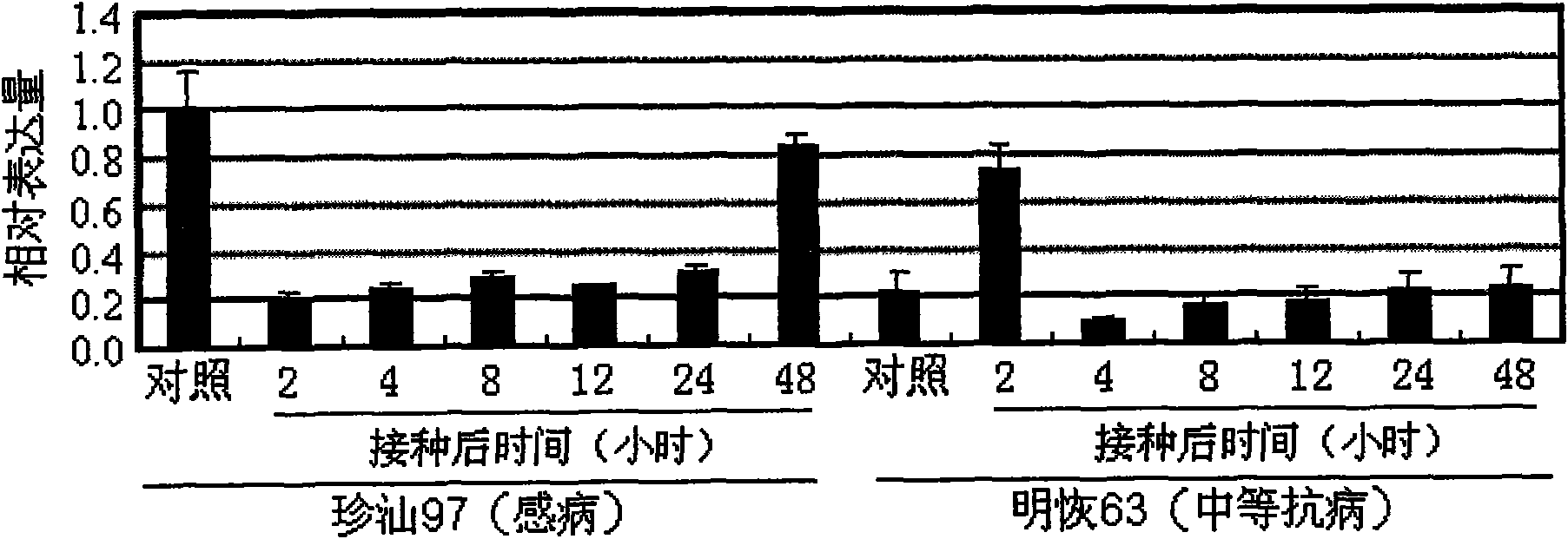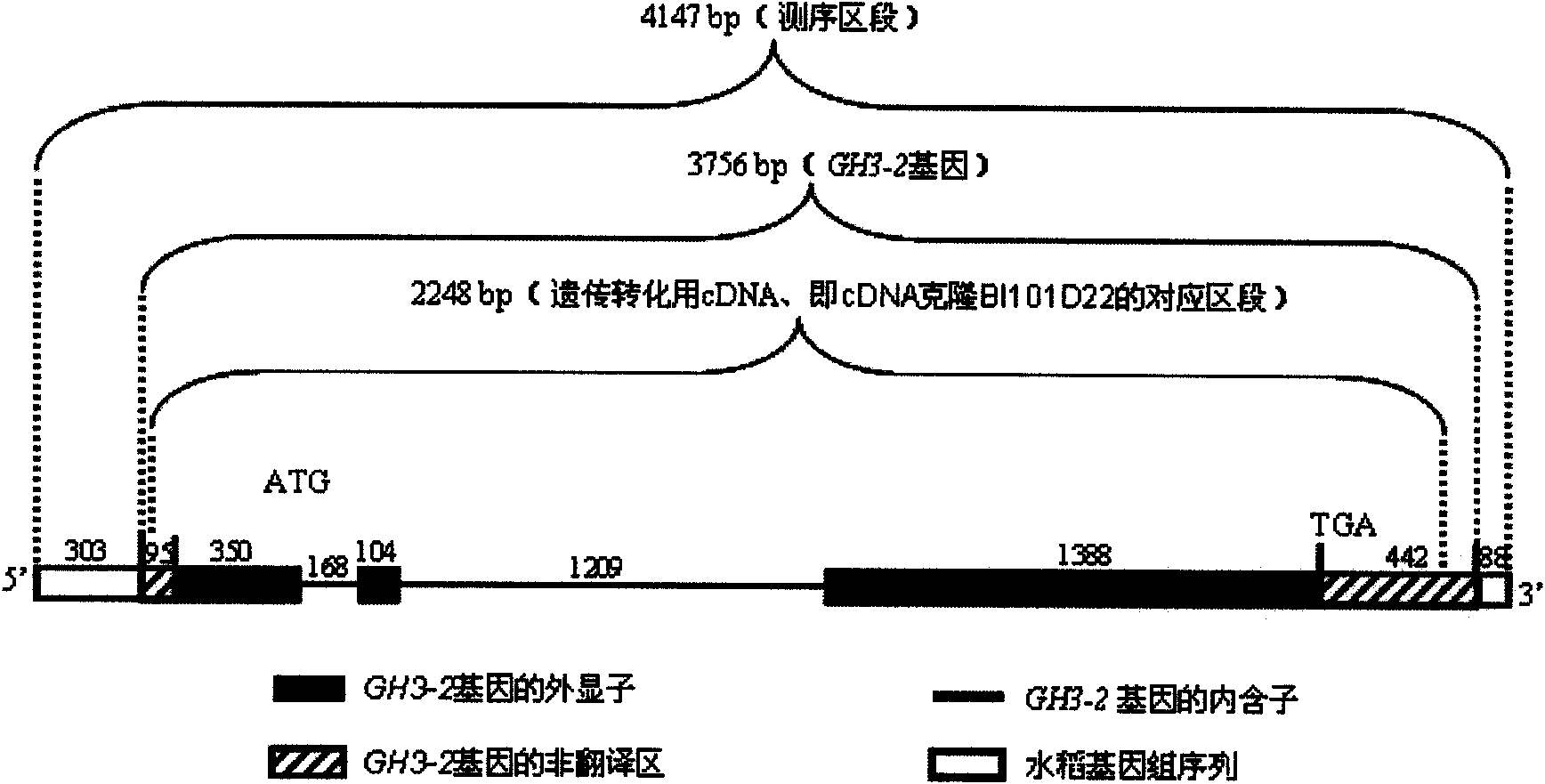Rice disease resistance related gene GH3-2 and application thereof in breeding of broad spectrum disease-resistant rice
A gene and rice technology, applied in the field of genetic engineering, can solve problems such as unclearness, changes in rice disease resistance phenotype, and decline in yield and quality
- Summary
- Abstract
- Description
- Claims
- Application Information
AI Technical Summary
Problems solved by technology
Method used
Image
Examples
Embodiment 1
[0023] Example 1: Analysis of the expression pattern of GH3-2 gene in different rice varieties
[0024] The GH3-2 gene sequence [TIGR (The Institute for Genomic Research, The Institute for Genomic Research, http: / / rice.tigr.org ) database gene locus number: LOC_Os01g55940] Retrieve the expressed sequence tag (expressed sequence tag, EST) database REDB (Rice ESTDataBase, http: / / redb.ricefgchina.org, Zhang et al., 2005), found that a 2248bp cDNA sequence BI101D22 derived from Minghui 63 had 99% sequence homology with the GH3-2 gene in Nipponbare, so this gene derived from Minghui 63 was named GH3-2.
[0025] In order to confirm whether the GH3-2 gene is involved in the regulation of the disease resistance response, the present invention uses quantitative reverse transcription-PCR (quantitative reverse transcription-PCR, qRT-PCR) technology (Qiu et al., 2007) to analyze the expression of the GH3-2 gene in different rice Expression patterns in cultivars after inoculation with ...
Embodiment 2
[0027] Example 2: Isolation and clone GH3-2 gene and gene structure analysis
[0028] In order to verify the above speculation, the present invention isolated and cloned the GH3-2 gene from the disease-resistant rice variety Minghui 63 for gene function verification analysis.
[0029] 1. Prediction of GH3-2 gene structure
[0030] Using the cDNA sequence BI101D22 of the GH3-2 gene in rice variety Minghui 63 as a template, the full-length cDNA database KOME ( http: / / cdna01.dna.affrc.go.jp / cDNA / ), and found that the BI101D22 sequence had a 99% homology with a 2365bp full-length cDNA sequence (registration number: AK102809) from the japonica rice variety Nipponbare in the database. The sequence of AK102809 is the cDNA sequence of the gene numbered LOC_Os01g55940 in the rice genome sequence. The alignment analysis of the two sequences confirmed that the cDNA sequence BI101D22 of the GH3-2 gene of Minghui 63 contained the complete coding sequence (coding sequence) encoding the ...
Embodiment 3
[0040] Example 3: Functional verification of GH3-2 gene
[0041] 1. Construction of genetic transformation vector
[0042] The carrier used in the present invention is pU1301 ( Figure 5 ). pU1301 is a commonly used rice genetic transformation vector (Cao et al., 2007; Qiu et al., 2007; Ding et al., 2008). It is an Agrobacterium-mediated genetic transformation vector carrying a maize ubiquitin gene promoter with constitutive and overexpression characteristics.
[0043] The cDNA clone BI101D22 ( image 3 ) was digested with restriction endonucleases KpnI and BamHI to reclaim a 2326nt fragment as an exogenous ( image 3 The shown 2248nt cDNA fragments contain 39nt vector DNA fragments on both sides). At the same time, the genetic transformation vector pU1301 carrying the maize ubiquitin gene promoter was digested with restriction endonucleases KpnI and BamHI; after digestion, the digested product was extracted with chloroform:isoamyl alcohol (volume ratio 24:1) and purified...
PUM
 Login to View More
Login to View More Abstract
Description
Claims
Application Information
 Login to View More
Login to View More - R&D
- Intellectual Property
- Life Sciences
- Materials
- Tech Scout
- Unparalleled Data Quality
- Higher Quality Content
- 60% Fewer Hallucinations
Browse by: Latest US Patents, China's latest patents, Technical Efficacy Thesaurus, Application Domain, Technology Topic, Popular Technical Reports.
© 2025 PatSnap. All rights reserved.Legal|Privacy policy|Modern Slavery Act Transparency Statement|Sitemap|About US| Contact US: help@patsnap.com



